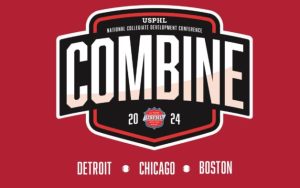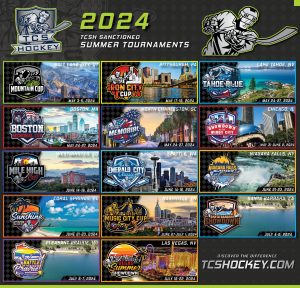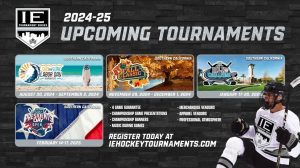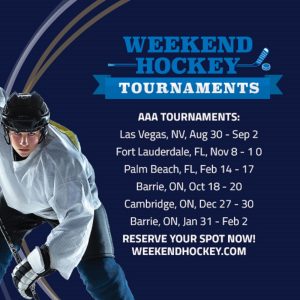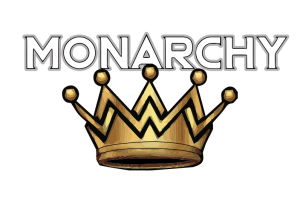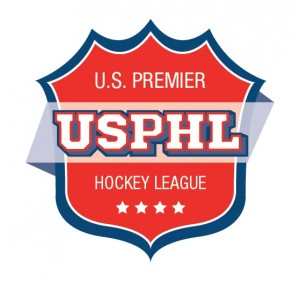Locals schooled on benefits of college route

With the escalating amount of elite talent being developed across the state, more and more players are being forced to make tough decisions regarding their futures at a young age.
Advocates of the college hockey experience – namely College Hockey Inc., an organization designed to ensure those players and their families are in-tune with the NCAA route and all it has to offer, on the ice, academically and socially – converged on Southern California last month to make their case.
The invitation-only CCM College Hockey Showcase, which was held at El Segundo’s Toyota Sports Center and run in cooperation with the Los Angeles Jr. Kings and Anaheim Jr. Ducks, was tailored for the state’s top 1999-, 2000- and 2001-born male players and their families and featured a series of on-ice sessions and educational seminars.
College Hockey Inc. executive director Mike Snee, who was in attendance along with deputy executive director Nate Ewell and director of education and recruitment Andrew Thomas, labeled the event a resounding success.
“It’s always rewarding coming to Southern California,” said Snee. “The Jr. Kings and Jr. Ducks are very welcoming and the young players and their families we host truly seem to appreciate the opportunity to attend and the information we share with them.
“Best of all is watching the players play and how good they are; after watching for just 10 minutes, it’s obvious why so many California natives are having success in college hockey and beyond.”
During the symposiums, players and parents listened to presentations relating to the on- and off-ice benefits of college hockey, as well as a presentation by Doug Christiansen, the director of player of development and recruitment for the United States Hockey League – a prime feeder circuit to the NCAA.
During the ‘99 birth-year symposium, participants were also treated to talks from and Q-and-As with Florida Panthers forward Rocco Grimaldi and Nashville Predators forward Eric Nystrom – two former NCAA players.
Both spoke to the value of their time on campus.
“It’s one of the most special times of your life,” said Grimaldi, a former California Wave player who played his college hockey at the University of North Dakota. “The memories you build, the friendships you make – it’s one of the best times of your life, whether you go one year or four years or anywhere in between.
“You get to learn about yourself; you get to grow as a man. That’s when I lived on my own for the first time, learned to cook a little, do my own laundry – all the little stuff.”
The rival option for young players? The Western Hockey League (WHL), a Canadian-based Major Junior circuit that’s classified as “professional” by the NCAA.
Make no mistake: The WHL is regarded as one of the top developmental leagues in all of North America, but competing in the Dub strips a player of their amateur status, thus making them ineligible for NCAA competition. A player can compete in the WHL as young as 16 year old.
“If you’re good enough, (scouts) are going to find you, whether it’s junior or college,” added Nystrom, who played at the University of Michigan and trains in Southern California during the offseason. “There’s just so much more that’s offered (in college); you just learn so many more life skills – being away from your parents, going to school, taking classes.”
Nystrom also spoke to the favorable game and travel schedule afforded in the NCAA ranks.
“You have a lot more time to practice your game; you’re not riding on a bus for 15 hours, playing a game every other night,” he said. “You have time to develop your skills.”
Four coaches were also in attendance, engaging in Q-and-As and scouting the on-ice sessions: Arizona State University head coach Greg Powers, University of Denver head coach Jim Montgomery, University of Maine head coach Red Gendron and Bowling Green State University assistant Ty Eigner.
According to Powers, who’s already landed three Southern California recruits in goaltender David Jacobson (Calabasas) and forwards Rory Herrman (Poway) and Jakob Romo (Fullerton), College Hockey Inc.’s presence in the region is critical.
“We’re really focusing on the western region to build our program, and now with Division I hockey in the Southwest at ASU and with the help of College Hockey Inc., more young players are becoming more aware of the fact that college hockey is not only the most logical path to the NHL, but also the most logical path to a successful life after hockey,” said Powers, whose Sun Devils are charting course on their first NCAA D-I campaign this season.
“Out west, there historically hasn’t been a strong presence and asserted effort to educate these kids on the alternative to the (WHL); now there is.”
ASU’s presence was a hot topic of conversation during the Southern California event, said Snee.
“It was interesting how many people asked about Arizona State and whether any schools in California are going to add NCAA D-I hockey,” said Snee. “It’s exciting to think how good a college hockey team in California could be.”
California has been the fastest-growing producer of NCAA Division I men’s hockey players over the last 10 years, citing a 155-percent growth rate – soundly besting second-place New Jersey’s 105-percent increase.
In fact, California produces more college hockey players than any state outside of Minnesota, Michigan, Massachusetts, Illinois and New York.
“All 60 (NCAA Division I) schools are (scouting in California) a lot, and they’ll be there even more because more and more players are going to be coming from California,” said Snee, who also noted that men who toil in the NCAA Division I hockey ranks boast an impressive 92-percent graduation rate – the highest of all NCAA Division I men’s sports.
Nystrom summed up his collegiate experience in Ann Arbor.
“This is how I think college hockey helps you prepare for life: You might have the biggest exam of the year on Friday afternoon, and then have the biggest game of your season that night, and you have to be mentally prepared; you have to take that exam and then get your mind right to play a huge hockey game,” he said. “I think that develops you for life after hockey, and I think that’s what college has to offer.
“Everybody’s path is different, but for me (playing college hockey) was the best decision I ever made.”
– Brian McDonough

